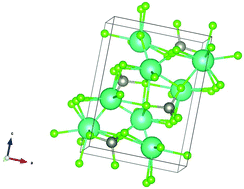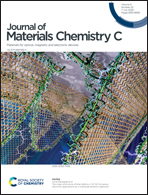Devising novel methods for the controlled synthesis with morphology and size control of scintillator materials†
Abstract
Nanoscale scintillators represent an important class of materials underlying the functioning of high resolution, high ‘light yield’ radiation detection equipment, applicable for medicine in addition to security and environmental monitoring. This current study has focused on the controlled synthesis of Cs2ZnX4 (X = Cl, Br) not only due to its very fast and promising radioluminescence decay time but also because no reliable synthesis protocols have been reported for producing nanoscale motifs of this material, to date. Solution-based methods can be used to synthesize products, possessing different, discrete morphologies with the ability to dictate particle size and shape. Specifically, we have demonstrated that a hot injection technique can be used to fabricate nanoscale rods and plates. Using this method, we systematically studied the effect of varying reaction variables, such as (i) reaction temperature, (ii) surfactants, and (iii) reaction time. As synthesized nanorods of Cs2ZnCl4 possessed lengths of 101.3 ± 24.4 nm with widths of 17.3 ± 4.5 nm, whereas Cs2ZnBr4, created under identical conditions, were characterized by lengths of 206 ± 50 nm and widths of 26.7 ± 12.6 nm. Ligand-assisted re-precipitation (LARP) was used to produce the corresponding micron-sized particles. Under these conditions, we successfully synthesized spindles and spherical particles of Cs2ZnCl4 with sizes of 1.58 ± 0.16 μm and 1.03 ± 0.34 μm, respectively, whereas plates of Cs2ZnBr4 were prepared with average sizes of 0.76 ± 0.21 μm. High resolution synchrotron mapping, using the hard X-ray nanoprobe at NSLS II, was used to confirm the expected spatial distribution of Cs, Zn, and Cl within the as-produced crystals. Nanorods of Cs2ZnCl4 and Cs2ZnBr4 were subsequently tested for scintillation light yield and decay times. Preliminary results showed that Cs2ZnCl4 maintained a light yield of 100–300 photons per MeV with a fast decay component of 2.6 ns. The Cs2ZnBr4 analogue did not give rise to any perceptible scintillation emission.



 Please wait while we load your content...
Please wait while we load your content...